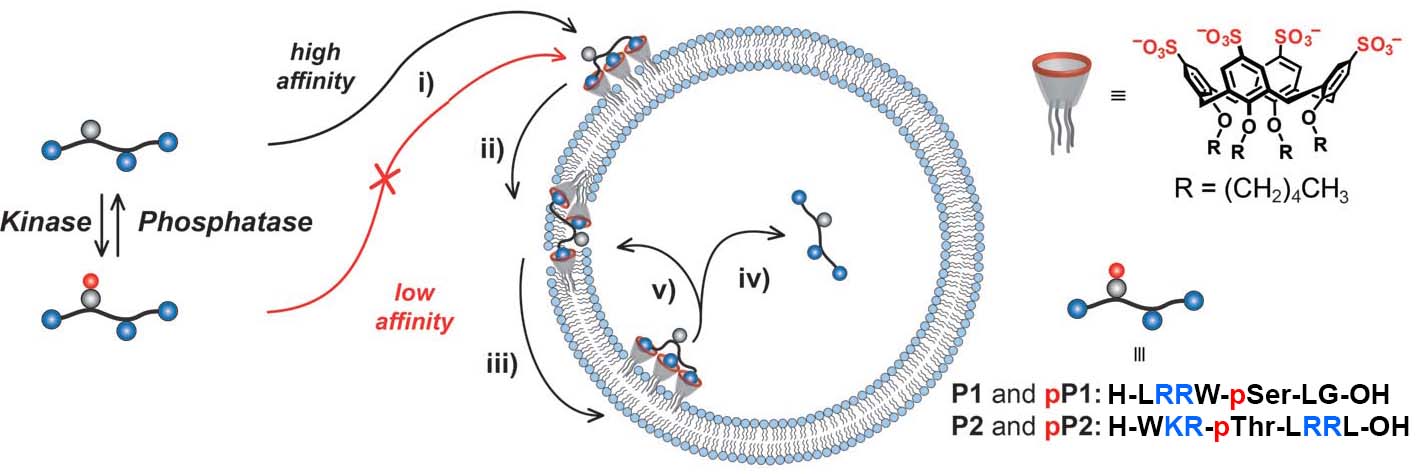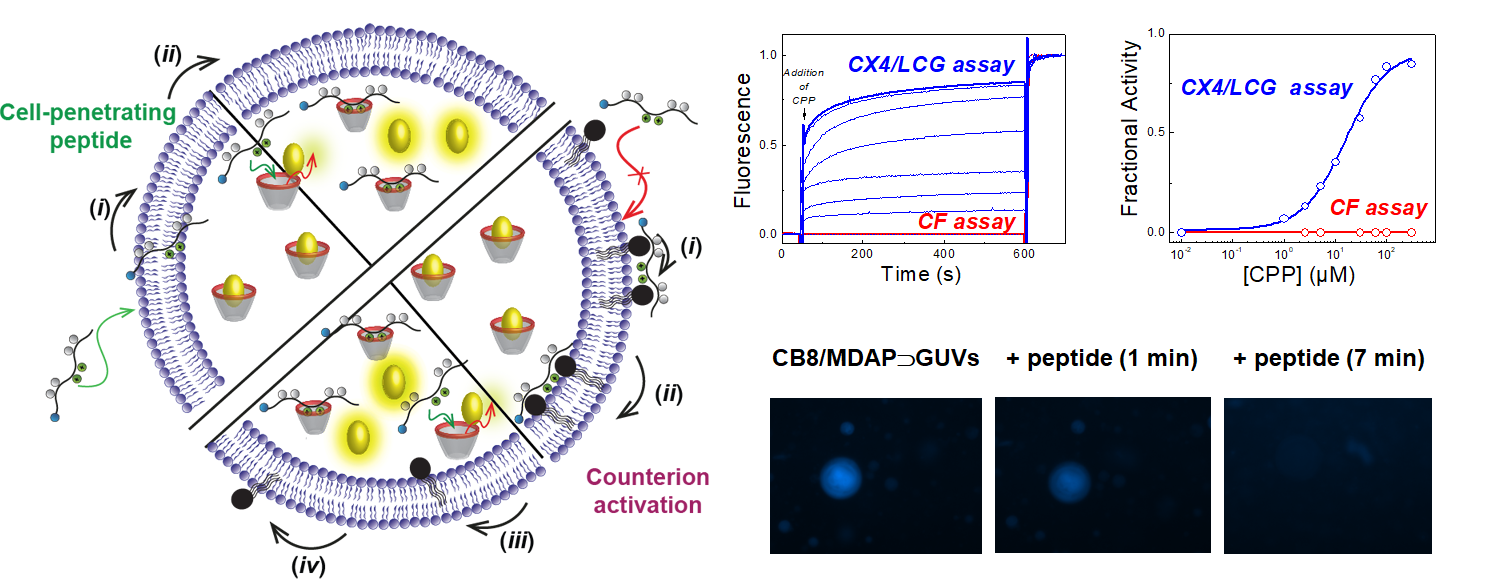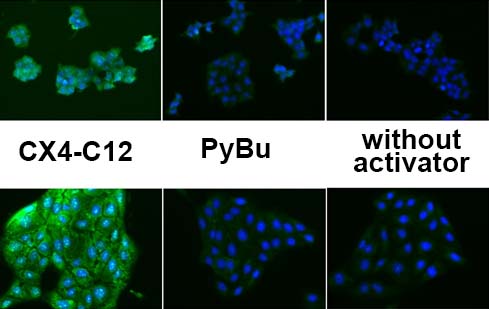Main content
Top content
Supramolecular Chemistry
Top content
Sensors
We detect biomolecules and other analytes with our supramolecular sensor systems.
Biomembranes
We study supramolecules in the biomembrane to monitor and control membrane transport processes.
Nanomaterials
We equip nanomaterials and surfaces with new functions using supramolecular chemistry.
Chemo- und Biosensors
We have developed a fundamentally new approach to monitor biochemical reactions. Therefore, we exploit that the spectroscopic properties of guest molecules change, when they bind to supramolecular host molecules. This is especially useful with dyes, which change their color or fluorescence upon binding.
When strongly binding molecules are created, e.g. in the course of an enzymatic reaction, the new molecules will bind to the supramolecular host and displace the dye. This leads to a color or fluorescence change of the dye and enables the detection of the biochemical reaction.

Within the recent years, we have
- worked with microbiologists to detect bacterial strains, that can degrade steroids in waste water Anal. Bioanal. Chem. 2017
- collaborated with medical doctors to develop a high-throughput screening assay that can test enzyme inhibitors as potential lead structures in drug discovery SLAS Discov. 2017
- transferred the method to magnetic resonance imaging with biophysicists Angew. Chem. Int. Ed. 2015
Biomembranes
Supramolecular Membrane Transporters
The ability of a cell to seperate its inside from the outside and to maintain a stable balance between uptake and excretion of metabolic products has long inspired supramolecular chemists to mimic these functions and potentially create supramolecular systems that can be interfaced with live cells.
We have therefore developed and investigated supramolecular transport systems, which can selectively transport hydrophilic substances across biomembranes and in which transport can be switched on and off. This includes anion transport depending on membrane potential and selective transport of peptides, which have been dephosphorylated by phosphatases.

Membrane Transport Assays
It is also of interest in many research areas, whether a compound can cross the hydrophobic barrier of a biomembrane, for example, in drug discovery and for cell-penetrating peptides (CPPs). Popular screening methods, such as the ANTS/DPX or CF assays, allow an initial assessment, but they cannot unambigously verify actual membrane transport.
We have recently introduced a new method using supramolecular host-dye complexes, which have been encapsulated in the vesicle lumen of liposomes (LUVs and GUVs). In this way, externally added compounds can only bind to the host and displace the dye, when the compound actually crosses the biomembrane and reaches the vesicle interior. This enables us now to unambiguously detect membrane transport by the accompanying spectroscopic response of the intravesicular host-dye complexes.

- „Fluorescence Monitoring of Peptide Transport Pathways into Large and Giant Vesicles by Supramolecular Host-Dye Reporter Pairs“, J. Am. Chem. Soc. 2019
- „Fluorescent Artificial Receptor-based Membrane Assay (FARMA) for Spatiotemporally Resolved Monitoring of Biomembrane Permeability“, Comms. Biol. 2020




